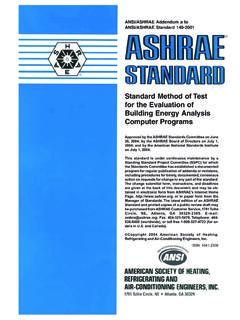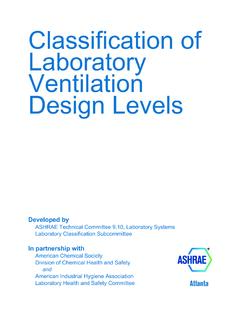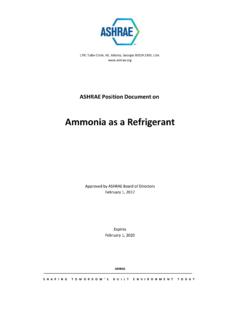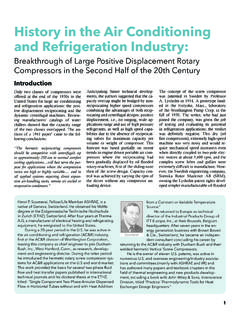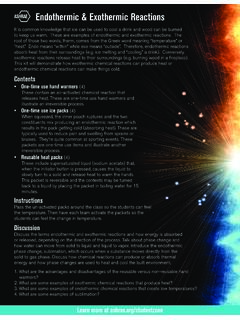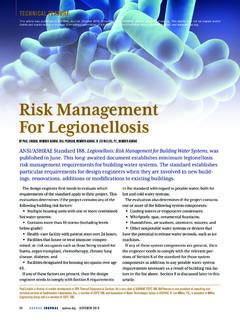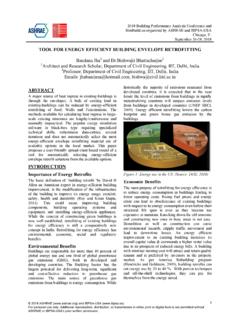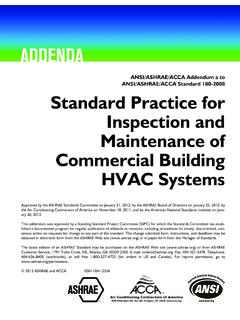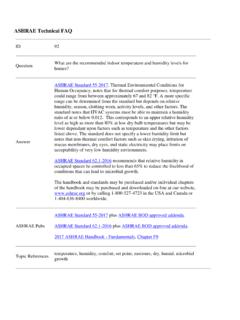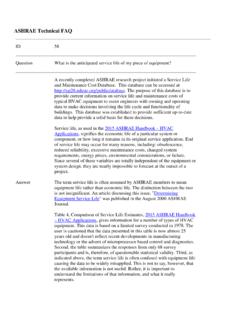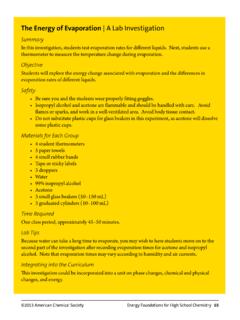Transcription of ASHRAE EPIDEMIC TASK FORCE
1 October 19, 2021 ASHRAE EPIDEMIC TASK FORCE Core Recommendations for Reducing Airborne Infectious Aerosol Exposure The following recommendations are the basis for the detailed guidance issued by ASHRAE EPIDEMIC Task FORCE . They are based on the concept that within limits ventilation, filtration, and air cleaners can be deployed flexibly to achieve exposure reduction goals subject to constraints that may include comfort, energy use, and costs. This is done by setting targets for equivalent clean air supply rate and expressing the performance of filters, air cleaners, and other removal mechanisms in these terms. 1. Public Health Guidance Follow all current regulatory and statutory requirements and recommendations, including vaccination, wearing of masks and other personal protective equipment, social distancing, administrative measures, circulation of occupants, hygiene, and sanitation.
2 2. Ventilation, Filtration, Air Cleaning Provide and maintain at least required minimum outdoor airflow rates for ventilation as specified by applicable codes and standards. Use combinations of filters and air cleaners that achieve MERV 13 or better levels of performance for air recirculated by HVAC systems. Only use air cleaners for which evidence of effectiveness and safety is clear. Select control options, including standalone filters and air cleaners, that provide desired exposure reduction while minimizing associated energy penalties. 3. Air Distribution - Where directional airflow is not specifically required, or not recommended as the result of a risk assessment, promote mixing of space air without causing strong air currents that increase direct transmission from person-to-person. 4. HVAC System Operation Maintain temperature and humidity design set points. Maintain equivalent clean air supply required for design occupancy whenever anyone is present in the space served by a system.
3 When necessary to flush spaces between occupied periods, operate systems for a time required to achieve three air changes of equivalent clean air supply. Limit re-entry of contaminated air that may re-enter the building from energy recovery devices, outdoor air, and other sources to acceptable levels. 5. System Commissioning Verify that HVAC systems are functioning as designed.
